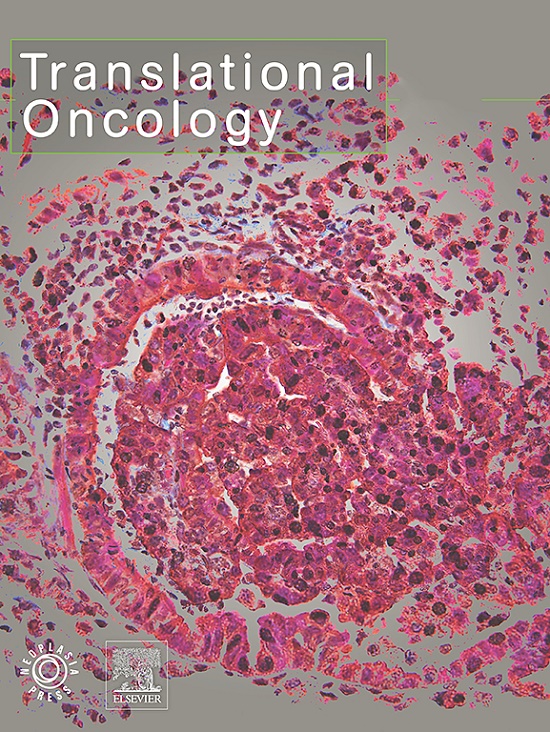Lnc-EST885通过PI3K / AKT通路与TRAF4相互作用促进肝癌转移。
IF 5
2区 医学
Q2 Medicine
引用次数: 0
摘要
背景:肝细胞癌(HCC)是全球性的主要恶性肿瘤,具有恶性程度高、分子机制复杂的特点。本研究旨在探讨长链非编码RNA (lncRNA) lnc-EST885在HCC发展中的作用。方法:采用FISH、western blot、流式细胞术和功能分析等细胞实验,研究lnc-EST885对细胞增殖、凋亡、迁移和EMT过程的影响。利用RNA pull-down和ESI-FT-ICR-MS鉴定与lnc-EST885相互作用的蛋白,并通过RIP-qPCR进行验证。此外,通过生物信息学分析和动物模型评估lnc-EST885和TRAF4与HCC预后和转移的相关性。结果:lnc-EST885是m2型巨噬细胞中表达水平最高的lncrna之一。lnc-EST885在HCC组织中的表达明显高于正常组织,且高表达与预后不良相关。功能实验表明,lnc-EST885能显著促进肝癌细胞的增殖和迁移,抑制细胞凋亡,诱导EMT。小鼠肺转移模型的研究也证实了lnc-EST885在体内促进HCC细胞的肺转移。机制研究表明,lnc-EST885可与TRAF4蛋白结合,激活PI3K/AKT信号通路,从而促进肝癌细胞的增殖、迁移和EMT能力,促进HCC的恶性表型。结论:lnc-EST885在肝癌的发生发展中起着至关重要的作用,可作为预测HCC预后的潜在生物标志物,为HCC治疗提供新的靶点。本文章由计算机程序翻译,如有差异,请以英文原文为准。

Lnc-EST885 promotes hepatocellular carcinoma metastasis through PI3K / AKT pathway by interaction with TRAF4
Background
Hepatocellular carcinoma (HCC) represents a major malignancy globally, characterized by high malignancy and intricate molecular mechanisms. This study aims to explore the role of the long non-coding RNA (lncRNA) lnc-EST885 in HCC development.
Methods
Cell experiments including FISH, western blot, flow cytometry and functional analysis were used to elucidate the effects of lnc-EST885 on cell proliferation, apoptosis, migration and EMT processes. RNA pull-down and ESI-FT-ICR-MS were used to identify proteins that interact with lnc-EST885 and were verified by RIP-qPCR. Furthermore, the association of lnc-EST885 and TRAF4 with HCC prognosis and metastasis was evaluated through bioinformatics analysis and animal models.
Results
lnc-EST885 is one of the lncRNAs with the highest expression levels in M2-type macrophages. The expression of lnc-EST885 in HCC tissues is significantly higher than in normal tissues, and high expression is associated with poor prognosis. Functional experiments have shown that lnc-EST885 significantly promotes the proliferation and migration of liver cancer cells, inhibits apoptosis, and induces EMT. Studies in a mouse lung metastasis model have also confirmed that lnc-EST885 promotes the pulmonary metastasis of HCC cells in vivo. Mechanistic studies have revealed that lnc-EST885 can bind to the TRAF4 protein, activating the PI3K/AKT signaling pathway, thereby promoting the proliferation, migration, and EMT capability of liver cancer cells, contributing to the malignant phenotype of HCC.
Conclusion
lnc-EST885 plays a crucial role in the development of liver cancer, serving as a potential biomarker for predicting HCC prognosis and providing a new target for HCC treatment.
求助全文
通过发布文献求助,成功后即可免费获取论文全文。
去求助
来源期刊

Translational Oncology
ONCOLOGY-
CiteScore
8.40
自引率
2.00%
发文量
314
审稿时长
54 days
期刊介绍:
Translational Oncology publishes the results of novel research investigations which bridge the laboratory and clinical settings including risk assessment, cellular and molecular characterization, prevention, detection, diagnosis and treatment of human cancers with the overall goal of improving the clinical care of oncology patients. Translational Oncology will publish laboratory studies of novel therapeutic interventions as well as clinical trials which evaluate new treatment paradigms for cancer. Peer reviewed manuscript types include Original Reports, Reviews and Editorials.
 求助内容:
求助内容: 应助结果提醒方式:
应助结果提醒方式:


